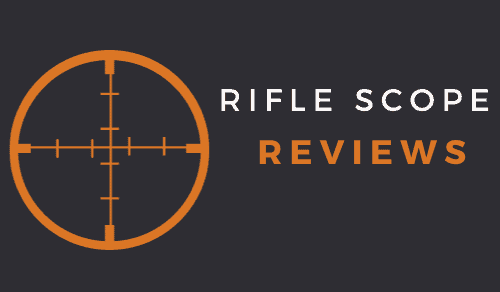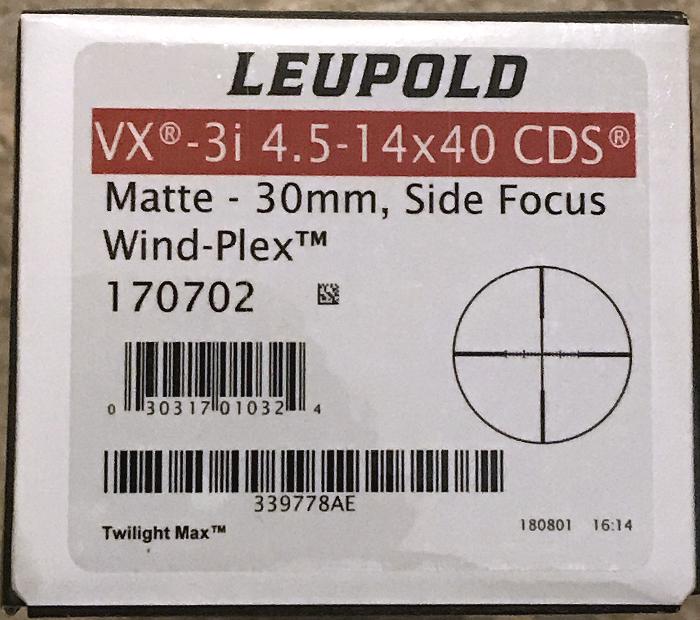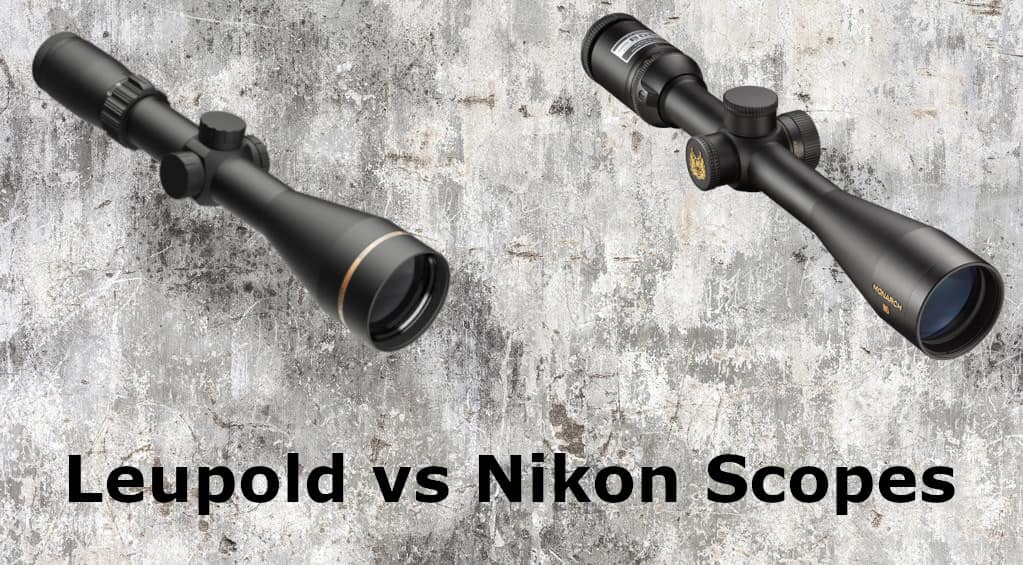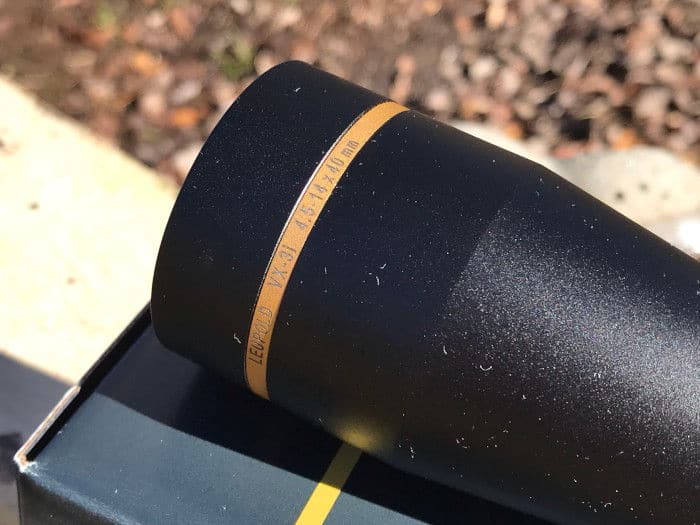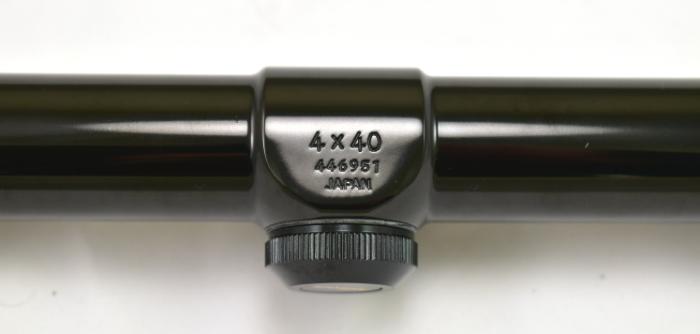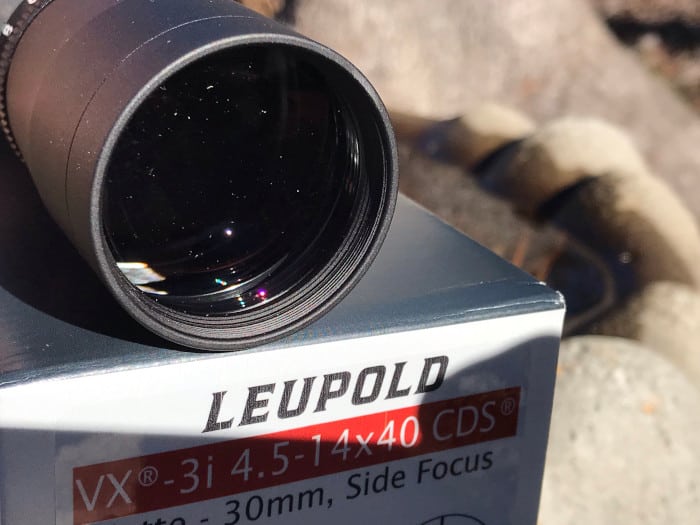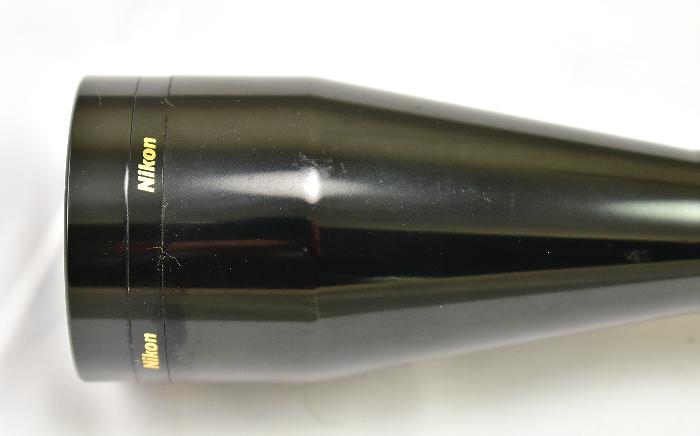As an Amazon Associate I earn from qualifying purchases. Amazon and the Amazon logo are trademarks of Amazon.com, Inc, or its affiliates.
At last check, there are probably 50+ different rifle scope brands on the market, and new manufacturers pop up every year. Inevitably, all the different brands lead to comparisons and brand-based opinions comparing one brand to another. As one of the most popular US-based brands, Leupold is frequently included as a comparison point for other brands. In this write-up, I will discuss a scope comparison featuring Leupold vs Nikon.
It’s worth noting that this won’t be an accurate apples-to-apples comparison between the two brands as Nikon stopped manufacturing and selling rifle scopes at the end of 2019 (and I wrote a more detailed post about it here). However, since Nikon is no longer selling scopes, it’s a comparison of an existing scope brand versus an out-of-business scope brand.
Leupold Scopes vs. Nikon Scopes
Just looking at both brands from a high level, Nikon and Leupold offer or offered a wide range of scopes designed to cover almost every shooting or hunting situation. However, Nikon had more entry-level scope options than Leupold, while Leupold features a more extensive selection of higher-end and tactical-based riflescope choices.
Go back ten years or so, and Nikon dominated the market for shotgun scopes, shotgun optics, and black powder or muzzleloader scopes. They were one of the first brands to offer a bullet drop compensation reticle built specifically for shotgun slugs and black powder slugs.
Leupold is the older, more established optical brand, but Nikon leveraged the popularity and reputation of their camera systems to springboard into the sporting optics market.
When conducting optical brand comparisons, I prefer to follow a specific format or template so that all the comparisons touch on the same information.
Even though Nikon is not in the riflescope business anymore, I will try to stick with my preferred format and supplement any information with data from Nikon’s last scope offering in 2019.
The base format I use consists of the following comparison points between brands.
- Comparison of Scope Offerings
- Comparison of Optical Quality
- Reticle Options
- Warranty Programs
- Country of Manufacture
- Costs
Comparison of Scope Offerings
When comparing scopes between different manufacturers, I generally use the following format based on MSRP costs:
- Entry Level
- Mid-Range
- Upper Mid-Range
- Top End
Entry Level Scopes (Up to $350)
For the purposes of this comparison, I’m defining entry-level riflescopes as ones that have an MSRP of $350 or less. With Nikon, I’m using the last known MSRP pricing of their scopes as of 2019.
Some things worth noting in this comparison:
- Leupold has several scope models that are part of their entry-level scope lines with an MSRP over the $350 mark, so those models will be included in a group with a higher price point.
- Due to differences in pricing, Nikon had several models that fell into this price range.
Looking at Nikon’s scope offering in 2019, their entry-level scope options priced under $350 included the following scope families:
- Prostaff P5 scopes (only the lowered powered models under the 4-16 range)
- Prostaff P3 scopes (All models)
- P-Tactical scopes (All models)
- Buckmasters II scopes (all models)
- Prostaff Rimfire scopes (All models)
- Force XR scopes (All Models)
All told, Nikon offered 49 different scope models across all the scope series listed above.
Looking at Leupold’s scope offering (at the time this post was published), their entry-level scope options priced under $350 include the following series of scopes:
- FX-II scopes (excluding the FX-II Handgun model)
- VX-Freedom scopes (excluding the 4-12 models and the 3-9 EFR model)
At the time of this post, Leupold has 18 riflescope models priced at or under the $350 mark.
In the Nikon vs Leupold comparision, it’s pretty clear that Nikon’s focus was geared more towards lower to mid-level price points.
From an optical quality perspective, I’d say that Leupold’s entry-level glass is better than Nikon’s entry-level models. The Leupold glass in this price point is a bit clearer and crisper than the Nikon glass.
However, I’d say that the Nikon entry-level glass offered slightly better and longer eye relief compared to the Leupold models. This enhanced eye relief at Nikon may be tied to Nikon’s experience with dedicated shotgun and muzzleloader scopes, which required some additional eye relief due to the recoil.
The power range options between the two brands in the entry-level category are also different. While there is some obvious overlap with the power ranges, Nikon offered more higher power range scopes in this price point compared to Leupold. In the sub-$350 price point, Leupold’s current scope offering tops out at 4-12 power, while Nikon had some 4-16 and 6-18 scopes in this price range.
Within the sub $350 price point, both brands offered some bullet drop compensation (BDC) solutions, but each went about the solution in different approaches. For example, Nikon used specific BDC reticle options that were geared towards particular calibers or shotgun gauges, while Leupold offered their patented Custom Dial system (commonly abbreviated to CDS). The CDS system uses a custom turret built for a specific caliber and sighted in at a specific distance. Once the CDS system was configured, a shooter could dial the CDS dial out to a certain distance, and the bullet drop was preconfigured.
Mid-Range Scopes ($350 – $500)
The mid-range scope market is one of the most competitive markets in the riflescope industry as it’s the fastest-growing segment in the scope business.
However, there really isn’t a uniform definition or standard pricing model that defines the “mid-range” market. Most brands define mid-range as scopes having an MSRP range of $400 to $700, but it varies greatly depending on a brand’s focus. For example, mid-range scope prices for Nightforce won’t be the same as mid-range pricing for Athlon scopes as each brand has a different focus as far as the ideal market.
For the purposes of this write-up with these two brands, I’m going to define mid-range scopes as models with an MSRP between $350 and $500.
Within the now-defunct Nikon scope line, the mid-range optics in the $350 to $500 price range include the following scope series:
- Nikon Prostaff P5 scopes (Only the 4-16 and 6-24 side focus models)
- Nikon Monarch M5 scopes (only the 3-12 models)
- M-Tactical scopes (All models)
- Black Force1000 scopes (all models)
- Black X1000 (Only the 4-16x50SF model)
Within the Leupold line of riflescopes, the mid-range models in the $350 to $500 MSRP range are the following:
- VX-Freedom scopes (which includes about half of the entire line)
- FX-II (Only the 4-28 Handgun mode)
- FX-3 6×42 scope
- VX-3HD (Only the 1.5-5 and 2.5-8 models)
- Mark 3HD (Only the 3-9 and 1.5-4 models)
Nikon had a total of 11 scope models in the mid-range price points, while Leupold offers 17 scope models that fall into the $350 to $600 price range. Leupold features a broader range of scope options in this price range, with scopes from the VX-Freedom series making up the bulk of the riflescopes in this range.
From an optical quality standpoint, I’d again give the edge to Leupold. However, the Nikon glass quality in this price range was much better than the optical quality of their entry-level optics.
The power magnification ranges within the two brands are relatively close from a comparison standpoint, although Leupold offers a more diverse range of magnification options, emphasizing lower-powered scopes geared towards hunting.
Within the $350 to $500 price range, Nikon offered a few scopes geared towards hunting but featured more scope options that were focused on tactical or precision-based shooting (such as the M-Tactical and Black Force 1000 scopes).
Many of the Leupold scope models in this price category were available with the Leupold CDS dial option and came with a free CDS dial coupon.
Nikon had a similar system at one point, but it was a partnership with Kenton Turrets. With this partnership, Kenton was an official Nikon vendor and provided Nikon branded turrets through the Nikon turret program. As a side note, Kenton Turrets can still provide custom turrets built for specific Nikon reticles.
The product offerings from both brands are or were relatively strong for this price range.
Upper Mid-Range Scopes ($501 – $1000)
For this comparison, I’m listing the upper mid-range category as riflescopes with an MSRP between $501 and $1000.
The upper mid-range scope market is also a competitive space, but I don’t believe it’s as competitive as the mid-range market.
This is an area where you start to see a significant difference in optical quality compared to the mid-range and entry-level scopes. In addition, you also begin to see more 30mm scope options in this range as well.
Within the Nikon scope line, the upper mid-range models in $501 to $1000 included the following scope series:
- Monarch M5 scopes (only the 4-16 and 5-20 models)
- Black FX1000 (all models)
- Black X1000 (only the 4-16 and 6-24 models)
Within the Leupold scope line, the upper mid-range models in the $501 to $1000 MSRP range are the following:
- VX-Freedom (only the 3-9×50 illuminated model)
- VX-3HD (all models except for the 1.5-5, 2.5-8, 3.5-10 non-illuminated models)
- Mark 3HD (all models except for the 3-9 and 1.5-4 models)
- VX-3 Handgun 2.5-8
- VX-5HD (only the 2-10 and 3-15 models non-illuminated models)
Within this price range (at the time of this writing), Nikon offered a total of 14 scope models in the upper mid-range price points, while Leupold offers 25 scope models that fall into the $501 to $1000 price point. In this price range, even when Nikon was still in the scope business, Leupold offered a significantly more comprehensive range of scope choices across the board.
Having spent some time comparing Nikon and Leupold scopes in this price range firsthand, in my opinion, Leupold has better glass in this price range. This better glass quality was especially true as you approached the $1000 MSRP price point. Around the $1000 price point, there’s a significant difference in glass quality between the Nikon scopes and the Leupold scopes.
Most of the Nikon scopes in this price range were geared towards long-range or tactical shooting, while the Leupold options in this price range were more diverse and covered a broader range of shooting applications. Several of the Leupold scopes in this price range are built as higher-end, big game hunting scopes.
The upper end of Nikon’s line, such as the FX1000 or the X1000 series of scopes, was a good choice for entry-level long-range scope options in the sub-$1000 range.
Almost every Leupold scope in this category is available in a version equipped with Leupold’s Custom Dial platform, which is an excellent addition for someone interested in taking advantage of the CDS platform.
From a pricing standpoint, this is a category where you start to see significant differences in the MSRP pricing. For example, Nikon’s most expensive riflescope in 2019 had an MSRP of $799.99, while Leupold offers several scope models that exceed the $1000 and $1500 MSRP price points.
Top End Scopes ($1001 and up)
As I mentioned previously, Nikon’s 2019 scope offering maxed out with a few $799.99 MSRP scope models, so Nikon does not have any scope models in this category. As such, the only scope models to discuss in this price range are Leupold’s upper-end models. In the Nikon vs Leupold scope debate, this is a comparision point highlighting the significant cost differences between these two brands.
These Leupold scopes include their top-end models, and most are built for specific shooting or hunting disciplines, including:
- Long-range shooting
- Precision shooting
- Tactical based shooting
- Long-range hunting
Within the Leupold line of scopes, the models in the $1001 and up MSRP price range are these:
- VX-5HD scopes (Some of the top tier VX-5HD models will fit into this category)
- Competition Series scope
- VX-6HD (All models)
- Mark 5HD (All models)
- Mark 6HD (All models)
- VX-6 (All models)
- Mark 6 (All models)
- Mark 8 (All models)
When this post was written, Leupold offered 86 scope models with an MSRP of $1000 or more. Obviously, since Nikon had no scope offerings in this price range, Leupold is the only option between the two brands.
Just for additional comparison purposes and to highlight the different markets for each brand, Nikon’s most expensive scope offering was right at $800. On the other hand, Leupold’s most expensive scope model has an MSRP of $4700. The differences in pricing and the total number of available scope models within each brand help paint a picture of Leupold’s broad coverage of all the niche-specific or use-specific riflescope options they offer.
Comparison of Optical Quality
When trying to compare the quality of the optics between brands, there are several factors that go into my opinions. Overall image quality, brightness, clarity, and color are the primary comparison points.
The information I include is based solely on my opinions, which are entirely subjective, so take the information as you will.
Before I discuss the image quality between the two brands, I’d like to clarify that Nikon scopes underwent several changes over the years, impacting image quality over time.
Let me explain what I mean in more detail. When Nikon first entered the riflescope business, most of their scopes were manufactured in Japan, and most of the lenses were manufactured in Japan.
Over time, as a means to reduce costs and improve revenue, Nikon migrated the production of their scopes from Japan over to the Philippines, Thailand, and China. I’ll go into more details on that topic under the section below about “country of manufacture.”
I bring this up to point out that, in my opinion, the older, Japanese-made Nikon scopes had significantly better optics than the newer models that were made in the Philippines or China.
At one point, I had an older Nikon Monarch marked as being made in Japan and a newer Nikon Monarch 3 scope marked as being manufactured in the Philippines. Not only did the Japanese-made Monarch have significantly better optics than the Philippines-made Monarch, but the Japanese-made version also seemed to be higher quality with a better finish than the Philippines-made model.
In this case, it’s somewhat challenging to make a head-to-head comparison of the optical quality because there are areas of the riflescope market that Nikon did not cover, but Leupold does.
So, the fairest way to approach such a comparison seems to be by doing it by the price ranges or price grades (like the price points listed above):
Optical Quality of Entry-Level Scopes (With an MSRP up to $350)
Within Nikon’s series of entry-level scopes, you’ve got two different groups:
- Early models made in Japan
- Later models made in China
As mentioned before, the early model Nikon scopes, regardless of the price point, were made in Japan. For example, the Nikon 4X scope in the pics on this page is an early model fixed four-power scope that was manufactured in Japan.
Nikon later shifted the production of their entry-level scopes over to the Philippines and China, with most being made in China.
Nikon’s first and second generation of Japanese-made entry-level scopes featured very good glass for an entry-level riflescope and were on par with Leupold’s entry-level glass and, in some cases, even a little better. For example, these early Nikon models definitely had better optics than specific Leupold entry-level series like the VX-1 and Leupold Rifleman scopes.
However, the Chinese and Philippines made entry-level scopes from Nikon featured lowered quality glass, so the entry-level Leupold scopes had better optical quality.
Optical Quality of Mid-Range Scopes ($350 – $500)
The early model, Nikon scopes sourced from Japan, were not quite as good as the optics on the mid-range Leupold scopes but were reasonably close in quality. I wouldn’t say that the glass quality was even, but it was relatively close.
However, the newer generation Nikon scopes sourced from Southeast Asia had lower quality optics, so Leupold was the clear winner optically against those models. The optical quality between these two brands was quite noticeable under the above-stated conditions.
It’s just my opinion, but I suspect that Nikon would have done far better in the mid-range market had they kept sourcing the glass from Japan.
Optical Quality of Upper Mid-Range Scopes ($501 – $1000)
The upper mid-range market wasn’t really Nikon’s ideal market so, by the time they exited the scope industry, they weren’t competing all that well in the upper mid-range market space.
While Nikon did offer some excellent scopes in this price range, Leupold’s optical quality is better here as well. In this price range, even the Japanese-made Nikon scopes did not compete all that well with the optics on the Leupold’s in the same price range.
In my opinion, Leupold has a robust offering in this price range, which is one of the reasons that Nikon didn’t compete all that well optically in the $500 to $1000 price point. So while this isn’t precisely Leupold’s sweet spot, it is a price point where they perform exceptionally well.
Optical Quality of Top End Scopes ($1001 and up)
Since Nikon did not have any scopes in this price range, the optical quality in this market goes to Leupold.
The $1000 and up price range may be Leupold’s strongest market as they have a significant number of scopes in this range that sells very well.
So, from a high-level view, I’ve always felt that Leupold offered better optical quality, across the board, compared to Nikon. As mentioned previously, the older Nikon scopes manufactured in Japan were better optically, so they matched up better against Leupold’s optical quality. The Nikon optics sourced from the Philippines and Thailand were of lower quality, so the Leupold glass was usually substantially better than the glass on the Nikon scopes sourced from those locations.
Now, to be fair, I’m not saying that the Nikon glass was terrible or low quality because it wasn’t, especially compared to some other scope brands. On the contrary, it was better than average glass for the money but typically wasn’t as good as Leupold glass in the same price range.
Reticle Options
Here’s an in-depth look at the reticle options offered by both brands:
Nikon Reticles
Nikon was one of the first scope brands to jump on the concept of integrating bullet drop compensation into a scope reticle. Now, they didn’t invent the BDC concept but were one of the first brands to offer integrated BDC-based reticles explicitly made for certain rifle calibers, shotgun gauges, and muzzleloader calibers. This approach was especially popular for deer hunters who used a shotgun and wanted to extend their shooting distances with deer slugs.
When Nikon left the riflescope market, they were offering the following reticle options:
- NikoPlex (which was just Nikon’s version of a Duplex reticle)
- BDC
- BDC 60
- BDC 150
- BDC 200
- BDC 300
- BDC Predator
- Mildot
- Precision reticle
As you can see, the BDC reticle option proved to be an excellent seller, so they expanded the concept into several different BDC reticles built on specific distances.
One area where Nikon did not focus was illumination. Nikon offered very few illuminated reticle options, and most of those were focused on their long-range scopes, like the X1000 and the FX1000 models.
Leupold Reticles
Leupold offers a broad range of reticle options designed to fit their diverse scope choices. While Leupold has scopes to meet nearly any specific use or need, they built the brand on hunting scopes and are still best known for that market.
This emphasis on hunting scopes means that Leupold also features many hunting-based reticle options. For example, the most common reticle offering for Leupold is their Duplex reticle.
In addition, that same emphasis on hunting scopes also means that Leupold offers many scopes with an illuminated reticle option. As a matter of fact, nearly half of all the scope models offered by Leupold are available with an illuminated reticle option.
At last count, Leupold had over 80 different reticle options listed in their catalog.
Reticle Comparison
Suppose we’re just looking at the total number of reticle choices offered with each brand. In that case, Leupold wins the comparison because they have a significantly larger offering of reticle choices than Nikon.
If an illuminated reticle is essential to you, then Leupold wins that contest since they have far more illuminated reticle choices than Nikon.
However, Nikon would be the winner if you like BDC-based reticle options as they offered far more BDC reticle options than Leupold.
In the end, I’d give Leupold the definite edge in reticle choices just based on the sheer number of reticle options they offer, coupled with their extensive illumination options.
Warranty Programs
While most shooters and hunters won’t need to utilize a scope warranty, the warranty becomes a big deal if you have issues with the scope.
My experience has always been that the importance or value of the warranty seems directly tied to the costs of the riflescope. For example, most hunters won’t take the time to file a warranty claim on a $60 scope but won’t hesitate on a $600 scope. Personally, I tend to file a claim regardless of the scope costs because I’m a bit frugal.
Let’s take a deeper look at the warranty programs for Nikon and Leupold:
Leupold Scope Warranty
Leupold is one of the oldest and most popular sporting optics brands in the United States. Part of that popularity is most definitely tied to their stellar warranty program. Whether you are a fan of Leupold or not, it’s hard to argue with their lifetime guarantee.
Leupold’s lifetime warranty is relatively simple. Any non-electronic sporting optic product is guaranteed for life. Obviously, there are some exclusions to the guarantee, and those include situations where the “product has been modified, misused, or has been damaged by accident, abuse, or misapplication.”
The other caveat in their warranty program involves illuminated reticle options powered by a battery. The battery-powered illumination qualifies as an electrical component, and those are only covered by a two-year warranty.
Another positive feature of the Leupold warranty is that it is tied to the item, does not require any prior registration, and follows the product if it changes ownership.
If I had one complaint about the Leupold warranty: they require the item owner to pay for the shipping to have the scope sent in, but, in return, they cover the return shipping.
Nikon Scope Warranty
Originally, Nikon had a reasonably strong warranty program that they called their “No-Fault Repair Policy.” It was a lifetime warranty program with a few stipulations.
However, when Nikon decided to step away from the riflescope market, they modified their warranty in September 2019. This modification removed the previous No Fault warranty and replaced it with a “Limited Lifetime Warranty” program.
I wrote a detailed post about the changes to the Nikon Warranty program here, so there’s no need for me to repeat all that info in this post.
The bottom line is this: Nikon no longer offers a genuine lifetime warranty on their riflescopes.
Nikon Warranty vs. Leupold Warranty
Comparing the warranty programs between the two scope brands, Leupold is the clear winner as they offer a much better warranty than Nikon. Even when Nikon offered their original No Fault warranty program, the Leupold warranty set-up was still superior as it provided better coverage.
Country of Manufacture
Country of Manufacture is a fancy term that means where a product was made. For most consumers, where a product is made or manufactured was important because it played a role in the perceived quality and may have played a role in the US economy.
However, times have changed a bit, and people seem to care less and less about where a product is or was manufactured.
In the sporting optics world, very few, and I mean very few, US-based scope brands still manufacture their products in the United States. Instead, most outsource the manufacturing to optical facilities overseas (predominantly Southeast Asia).
Let’s look at where each of these brands is manufactured:
Nikon
As previously mentioned, when Nikon first entered the riflescope industry, all their scopes were produced in Japan. Most of the optical manufacturing facilities in Japan have a reputation for producing good quality scopes that hold up well.
At some point, Nikon opted to migrate almost all of their riflescope production from Japan over to optical manufacturing facilities in different locations, including Thailand, China, and the Philippines. I believe that the change was made somewhere around the 2012 timeframe, but I’m not entirely sure.
The entry-level scopes were sourced from China, while the mid-range and upper mid-range models were sourced from Thailand and the Philippines. Eventually, Nikon opted to source everything from one optical manufacturing facility in the Philippines.
Nikon continued to source their scopes from the Philippines until they stepped away from the scope industry in 2019.
I also wrote a more detailed post about where Nikon scopes are made here for some additional reading.
Leupold
Leupold has a fascinating history as they are the oldest sporting optics company in the United States.
Most sportspeople believe that Leupold scopes are made in the United States, but that isn’t wholly true. Leupold does not produce their scope glass, so, technically, their riflescopes are not 100% made in the USA.
Leupold does what many other top-end riflescope brands do: they use glass from different countries and then assembly their scopes at their US-based facility in Beaverton, Oregon.
However, they are closer to being made in the USA than about 99% of the other US-based scope brands.
So, if you were deciding between a Leupold scope and a Nikon Scope and wanted one that was “made in the USA,” then Leupold would be the better choice.
Riflescope Costs
From a cost perspective between the two brands, Leupold typically is the more expensive brand and ran about $100 to $150 more than the comparable Nikon scopes.
As I mentioned above, while Nikon had scopes at most any price point up to the $800 mark, they seemed to really focus their efforts on targeting the mid-range scope market. On the other hand, Leupold has such a comprehensive offering of scopes that they have the entire scope market covered with some scope offering. However, Leupold’s sweet spot seems to be the upper mid-range scope market.
Cost-wise, the two brands don’t match up precisely head-to-head because Leupold has a much broader offering of scope models.
Which is Better: Nikon or Leupold?
“Better” is always a relative term based on opinions so take the “good, best, better” ratings with a grain of salt.
However, if you look at the complete picture, and include factors such as glass quality, warranty program, reticle offerings, price points, etc., then Leupold is the “better” of the two brands, even when Nikon was in full swing.
Again, reading this post probably makes one believe that I either don’t like Nikon or that I absolutely love Leupold, and neither of those assumptions is correct.
I think Nikon made some good quality scopes for the money, especially when they first hit the market. While I do believe that Leupold is a top-quality scope brand, I also feel that about 90% of their scopes are overpriced compared to the rest of the scope market. Again, just my opinion.
I’ve been working in the firearms and sporting optics industry for over 20 years, with a personal and professional interest in all things related to rifle scopes, Through a combination of work experience, formal training, and personal experiences, I have extensive experience mounting, testing, and evaluating different rifle scope models across most major optical brands.
